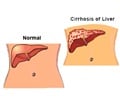A sensor that works as an 'electronic nose' in sniffing out some known poisonous gases and toxins, simply by changing colors has been developed by scientists.
Support for the development and application of this electronic nose comes from the National Institute of Environmental Health Sciences, part of the National Institutes of Health.Once fully developed, the sensor could be useful in detecting high exposures to toxic industrial chemicals that pose serious health risks in the workplace or through accidental exposure.
While physicists have radiation badges to protect them in the workplace, chemists and workers who handle chemicals do not have equivalent devices to monitor their exposure to potentially toxic chemicals.
The investigators hope to be able to market the wearable sensor within a few years.
"The project fits into the overall goal of a component of the GEI Exposure Biology Program that the NIEHS has the lead on, which is to develop technologies to monitor and better understand how environmental exposures affect disease risk," said NIEHS Director Linda Birnbaum.
"This paper brings us one step closer to having a small wearable sensor that can detect multiple airborne toxins," she added.
Advertisement
"We have a disposable 36-dye sensor array that changes colors when exposed to different chemicals. The pattern of the color change is a unique molecular fingerprint for any toxic gas and also tells us its concentration," said Suslick.
Advertisement
The power of this sensor to identify so many volatile toxins stems from the increased range of interactions that are used to discriminate the response of the array.
To test the application of their color sensor array, the researchers chose 19 representative examples of toxic industrial chemicals.
Chemicals such as ammonia, chlorine, nitric acid and sulfur dioxide at concentrations known to be immediately dangerous to life or health were included.
The arrays were exposed to the chemicals for two minutes.
Most of the chemicals were identified from the array color change in a number of seconds and almost 90 percent of them were detected within two minutes. (ANI)
Source-ANI
RAS














